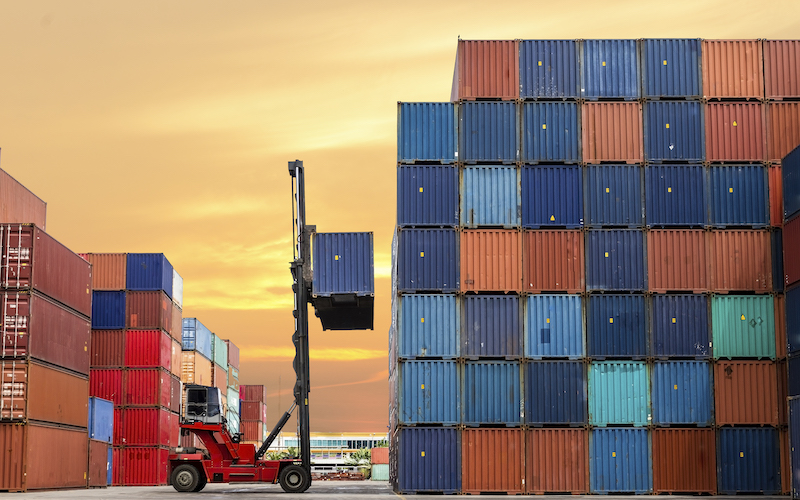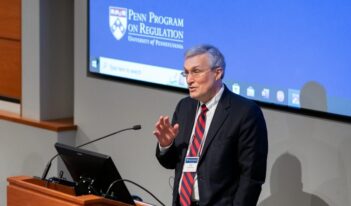
Scholars argue that the Trans-Pacific Partnership represents a new form of international ordering and regulatory governance.
Encompassing 11 Asia-Pacific countries with 496 million consumers and 13.5 percent of global GDP, the Trans-Pacific Partnership (TPP) trade agreement is the most extensive megaregional agreement in force—even after the Trump Administration withdrew the United States from an earlier version of the agreement.
But beyond its size and geographical reach, the TPP might provide a test case for a novel form of international economic regulation, argues Benedict Kingsbury, a New York University law professor, and his coauthors in a recent article.
That new form of regulation—what Kingsbury and his colleagues call “megaregulation”—possesses five distinctive features: extended geographical and economic scale; prescriptive coverage about the substance and procedure of national regulatory governance; increased freedom for large corporations to operate across borders; regulatory alignment between participating states; and the use of a treaty as an institutional form.
Kingsbury and his coauthors view the TPP as encompassing three distinct identities. The first is the final agreement that entered into force in December 2018 and was signed by 11 countries, led by Japan. Its second identity is the previous U.S.-led ordering project, which was signed by 12 countries in 2016 but ceased to progress once the United States withdrew. The agreement’s third identity lies in the future, as other countries consider joining the agreement and with the possibility that a future U.S. administration may seek to rejoin.
Kingsbury and his coauthors argue that, in any of its three identities, the TPP is a quintessential example of a treaty undertaking megaregulation.
They contend that the initial agreement was particularly unique because of its extended trans-oceanic scale and because of the inclusion of Japan and the United States—two of the world’s four major economies. Furthermore, the prescriptive content of the agreement, which went beyond other bilateral and regional preferential trade agreements, included new rules for the digital economy and state-owned enterprises. Finally, the TPP pursued a form of regulatory alignment between the states that went far beyond the World Trade Organization (WTO) rules, yet differs from an EU-style of regulatory harmonization.
Kingsbury and his coauthors argue that aligned regulation was a major aim for a number of negotiating countries, especially the United States until 2016. To this end, the current TPP still promotes a U.S.-inspired conception of the regulatory state that embraces anti-corruption, competitive bidding for government procurement, some transparency and due process, and little state interference in commercial data flow across borders.
The agreement today also includes a number of provisions favoring access to information, notice-and-comment rulemaking, reason-giving, and review mechanisms in national regulation. Kingsbury and his coauthors note that such procedural requirements build on, but go beyond, the substantial administrative law requirements in WTO agreements and other free trade deals.
Kingsbury and his coauthors also discuss how other motivations behind the TPP included pressure from large corporations that wanted improved regulatory alignment to assist the transnational flow of goods, services, capital, and data across countries. From a geopolitical perspective, the Obama Administration and several other negotiating states also shared a broad interest in countering China’s influence in Asia and the Pacific.
As with many other international trade agreements, the TPP was met with local opposition from many of its participating nations, Kingsbury and his collaborators explain. During the negotiation stage for the initial U.S.-led agreement, secrecy about the agreement’s text and process initially spurred much suspicion from members of the public in many countries.
Once the agreement’s text became public in late 2015, the most intense opposition mobilized in the United States. The critique from the left, led by U.S. Senator Bernie Sanders (I-Vt.) during his Democratic nomination campaign, emphasized the inegalitarian outcomes of the agreement, with most of the benefits directed toward corporate interests. From the right, the Trump campaign argued that the agreement would lead to the erosion of national sovereignty and policy autonomy.
After the Trump Administration withdrew the United States from the original TPP, certain U.S.-friendly provisions were suspended, such as some intellectual property protections. Beyond these changes, the final agreement’s text brought into operation most of the original agreement’s legal and political content.
Kingsbury and his coauthors highlight how supporters have argued that the TPP is a “21st century trade agreement.” But it remains to be seen how important the agreement will be for the future ordering of economic activities in an increasingly global marketplace.
After all, trade and investment thrived in the Asia-Pacific region without such an agreement. Furthermore, economic models show that, although some countries, like Vietnam, are expected to achieve significant gains from the TPP, most countries will only achieve modest gains.
Kingsbury and his coauthors argue that the revival of the final agreement following U.S. withdrawal demonstrates that megaregulation must offer some attraction to governments. In this respect, they argue that participating states probably consider that aligning regulatory institutions and governance may lead to improved future outcomes as economic production further globalizes.
Megaregulation, in the words of Kingsbury and his colleagues, offers a “counterweight” to a situation where regulation and governance drift into a complex mixture of “national and extra-territorial regulatory assertion by powerful states,” private corporate and financial governance, and some public-private initiatives.
Going forward, Kingsbury and his coauthors argue that the Trans-Pacific Partnership will be a model text for other agreements. More importantly, they hope that the agreement’s shortcomings will provide a reference point for better thinking about the regulation and politics of globalization.



